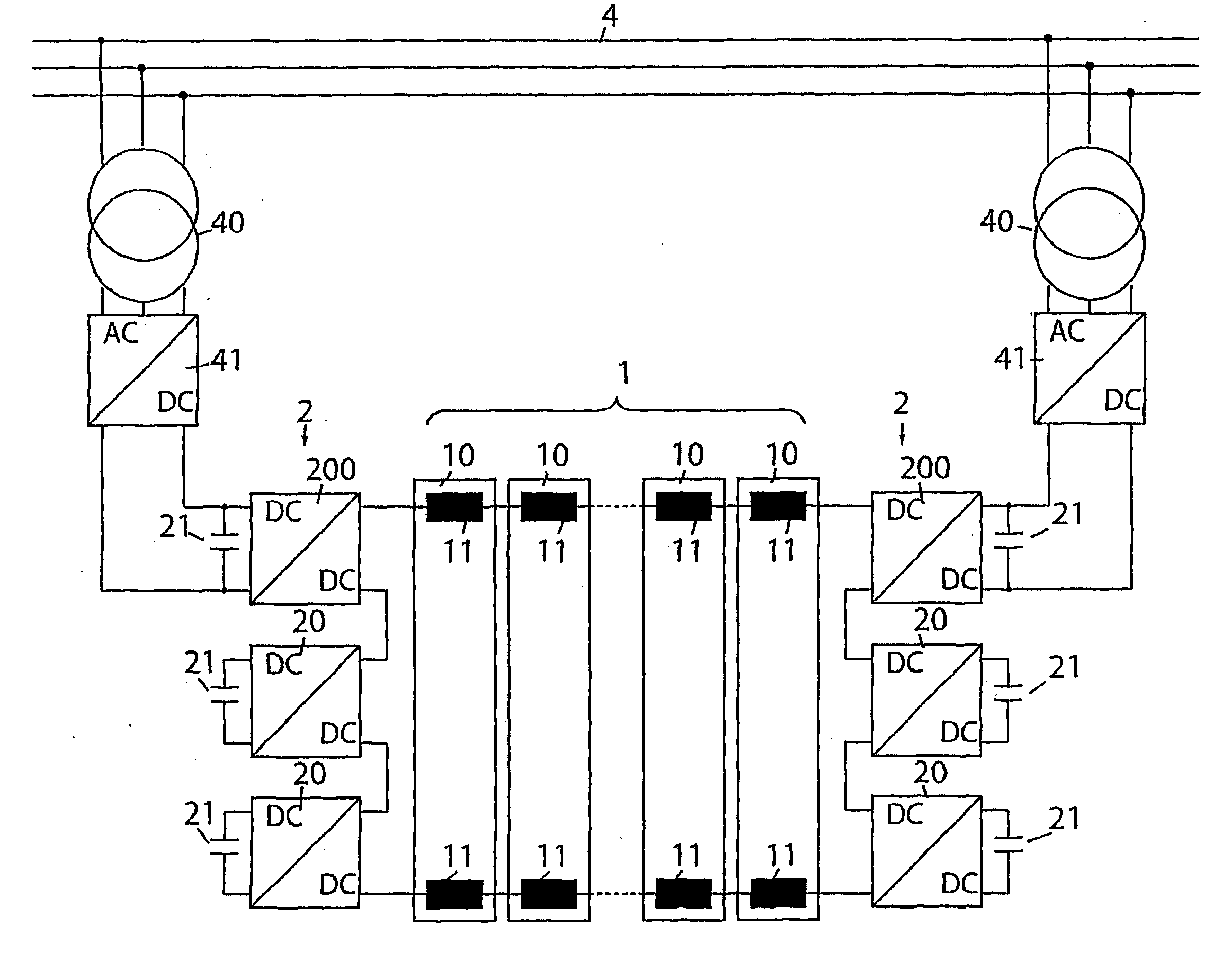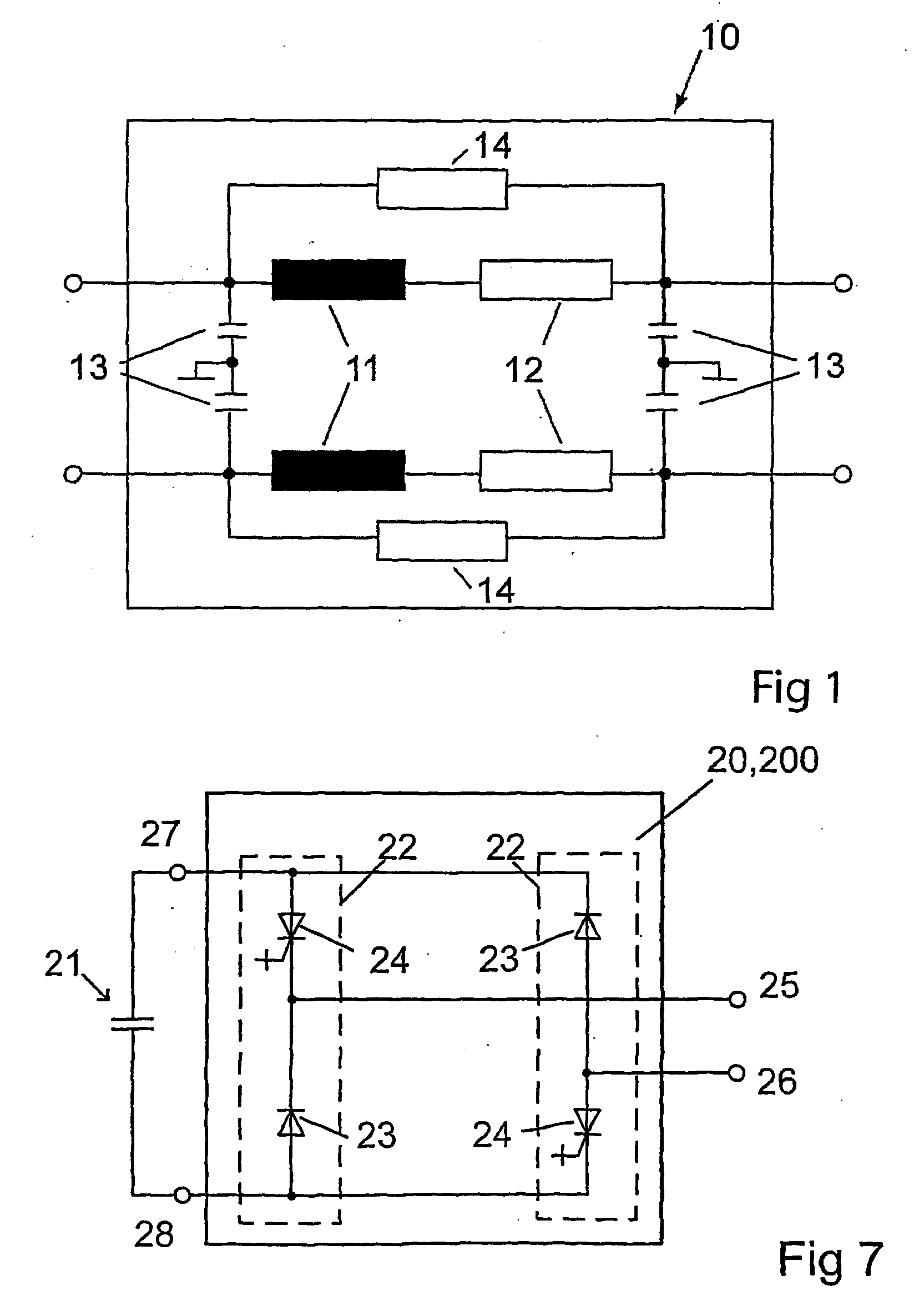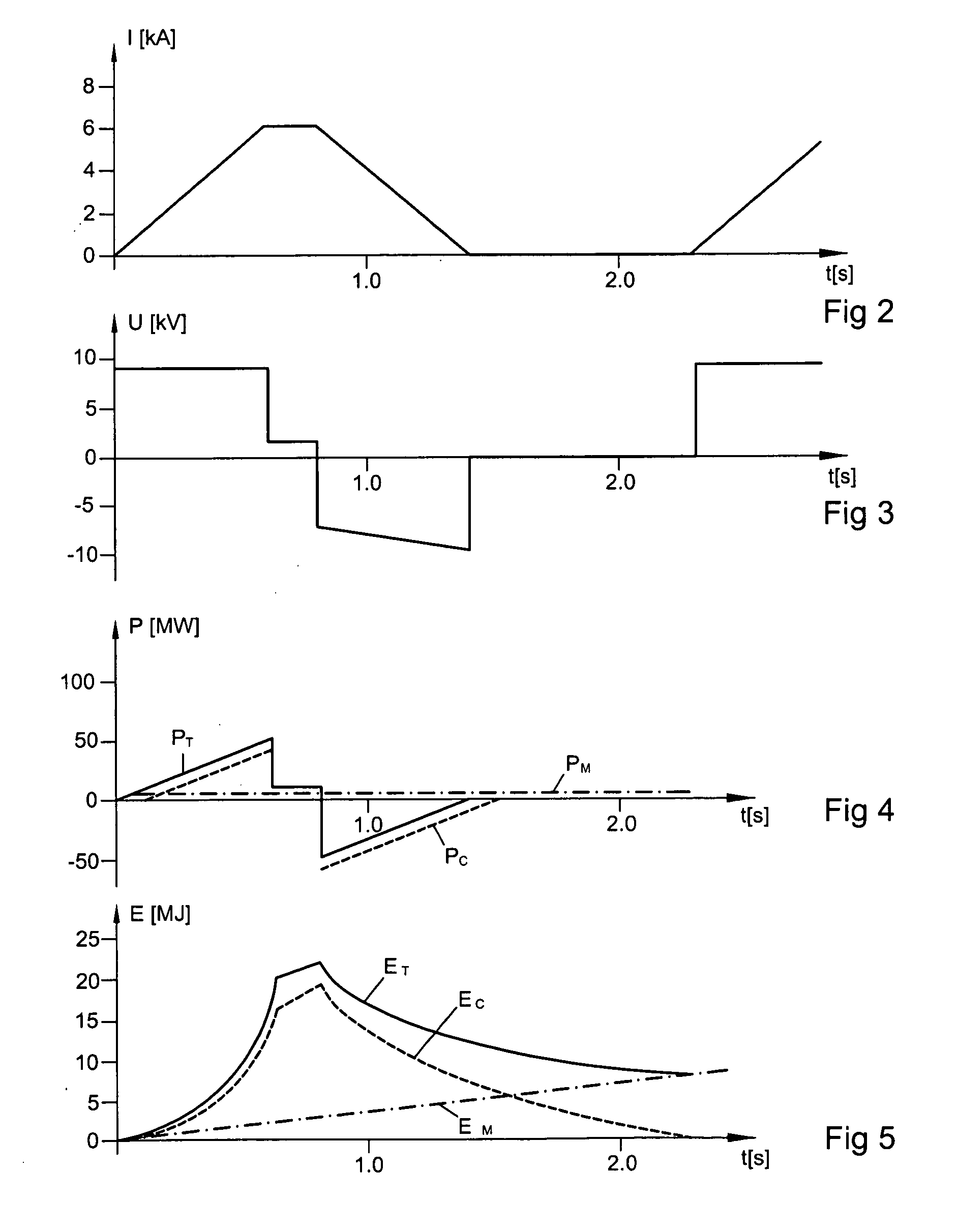Device for feeding a charge including integrated energy storage
a technology of integrated energy storage and charging device, which is applied in the direction of ac network circuit arrangement, dc-dc conversion, dc-dc conversion, etc., can solve the problems of wasting a lot of energy, and affecting the reliability of the system
- Summary
- Abstract
- Description
- Claims
- Application Information
AI Technical Summary
Benefits of technology
Problems solved by technology
Method used
Image
Examples
first embodiment
[0062]In a first embodiment, the rectifier cells 41 comprise a diode bridge 42, as shown in FIG. 14. In this embodiment, there is no control of the diode rectifiers 42 so the voltage at the terminals of the capacitors 21 of the DC / DC converter cells 200 cannot be modified. Therefore, such a device does not allow use of the energy stored in the capacitors 21, directly connected to the above-mentioned DC / DC converter cells 200, which are connected to the rectifier cells 41. A smoothing choke 43 is provided at the positive output of the bridge.
[0063]Variation of the output voltage of the rectifier cells 41 remains possible, given that the DC / DC converter cells 200 are operating according to the PWM principle, as described above. Thus, while the load current is being ramped up, there is zero energy contribution from the capacitors 21 of the DC / DC converter cells 200, directly supplied by the rectifier cells 41, namely the two cells 200 shown at the top of the diagram in FIG. 6, so the p...
second embodiment
[0065]In the second embodiment, the rectifier cells 41 are formed from a thyristor bridge 44, as shown in FIG. 15. In this embodiment, it thus becomes possible to vary the voltage at the terminals of the capacitors 21. To control the thyristor bridges, the ignition angle α of the thyristors 44 will be varied according to the voltage variation at the terminals of the capacitors 21. This variation of the voltage will allow the capacitors 21 to be discharged. In this case, the instantaneous power supplied by the thyristor rectifier cells 41 is not equal to the instantaneous power transmitted to the load. As for the previous embodiment, a smoothing choke 43 is provided at the positive output of the cell 41.
[0066]The use of thyristors in the rectifier cells 41, controlling the ignition angle α of the thyristors 44, entails a variation of the phase angle between the voltage and the alternating current at the input of the rectifier cells 41, thereby drawing reactive power from the primary ...
third embodiment
[0068]In a third embodiment, the rectifier cells 41 are formed from pulse rectifiers as shown in FIG. 16. In this case, the rectifier cell 41 includes a bridge assembly formed from GTO or IGCT-type thyristors 45, as shown on the left-hand side of the figure, or IGBT-type transistors 46, as shown on the right-hand side of the figure, it being understood that the bridge is formed from only semiconductor elements of one or the other type. Each of the above-mentioned semiconductor elements 45 or 46 includes a reverse conducting diode 47. Where a pulse rectifier cell 41 is used, the connections with the primary AC electrical grid must be made using decoupling and smoothing inductors 48, as shown in the figure.
[0069]With this kind of assembly, there is a first advantage in the form of the primary alternating current, which is very close to a sinusoidal form and whose harmonics are linked to the pulse frequency. Unlike the form of the alternating currents of the diode or thyristor rectifie...
PUM
 Login to View More
Login to View More Abstract
Description
Claims
Application Information
 Login to View More
Login to View More - R&D
- Intellectual Property
- Life Sciences
- Materials
- Tech Scout
- Unparalleled Data Quality
- Higher Quality Content
- 60% Fewer Hallucinations
Browse by: Latest US Patents, China's latest patents, Technical Efficacy Thesaurus, Application Domain, Technology Topic, Popular Technical Reports.
© 2025 PatSnap. All rights reserved.Legal|Privacy policy|Modern Slavery Act Transparency Statement|Sitemap|About US| Contact US: help@patsnap.com



